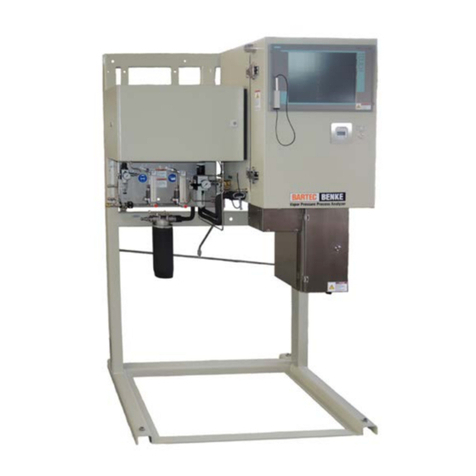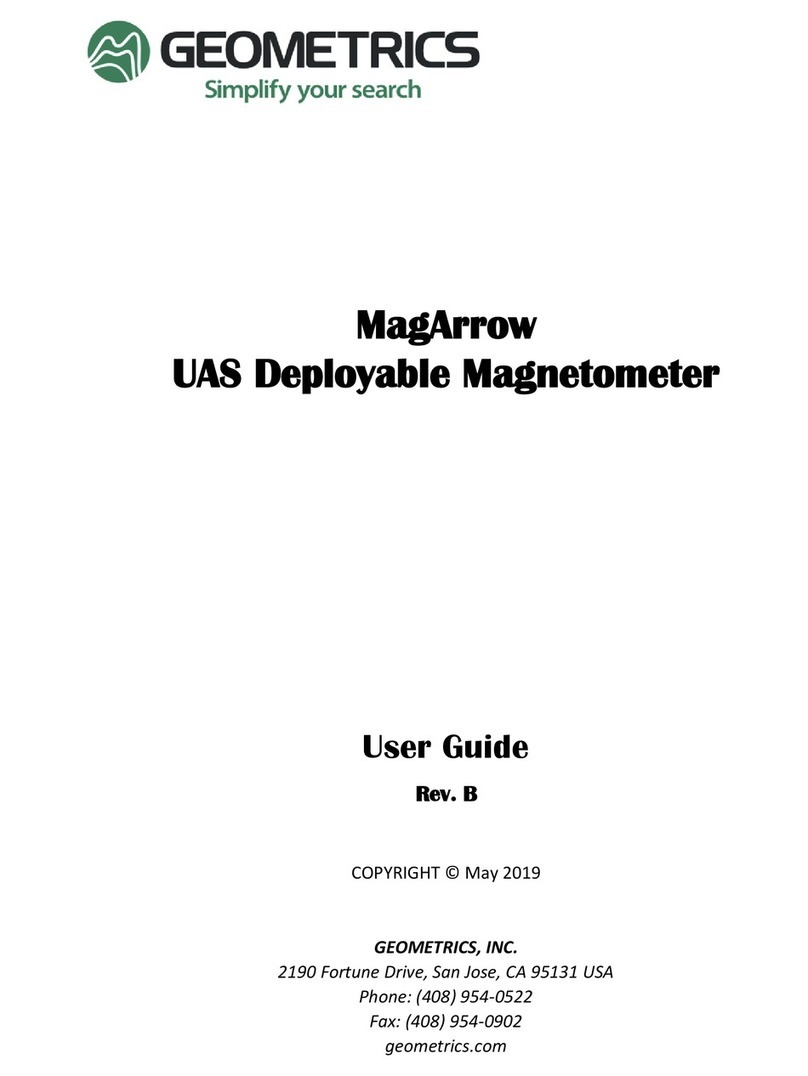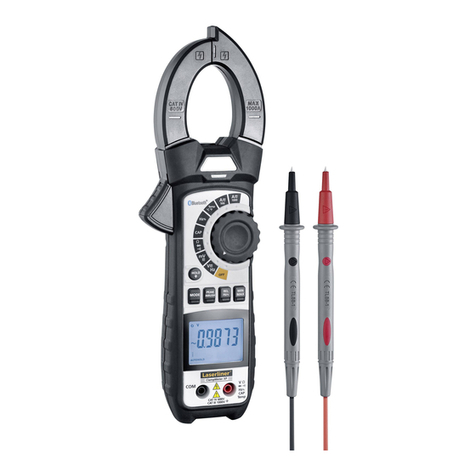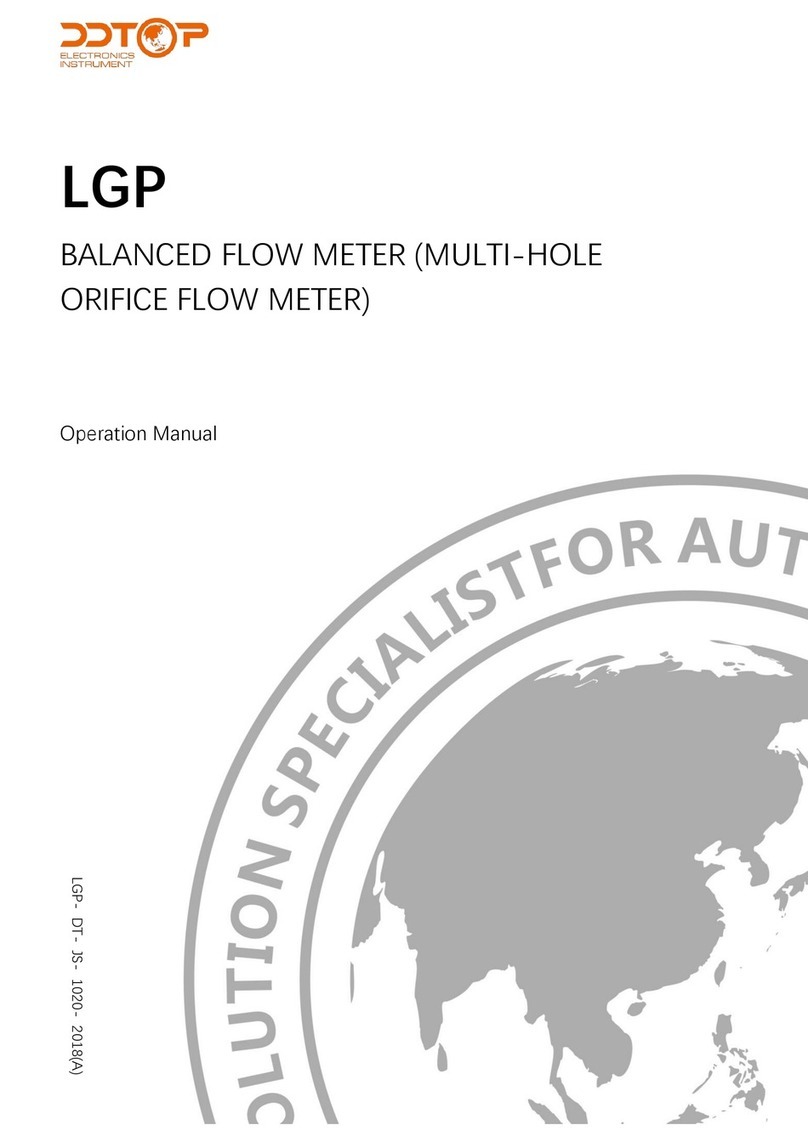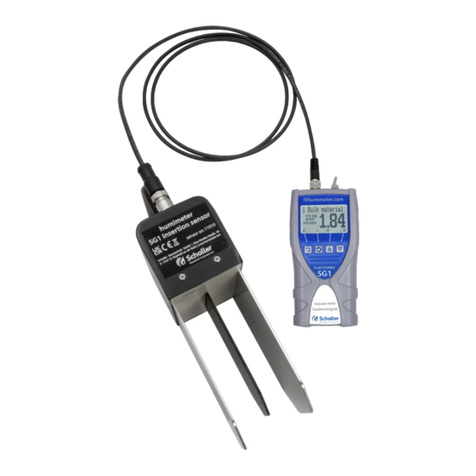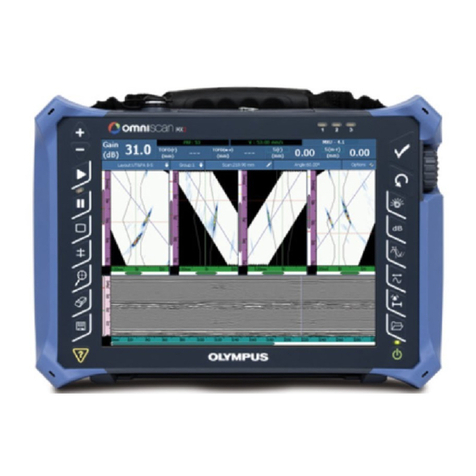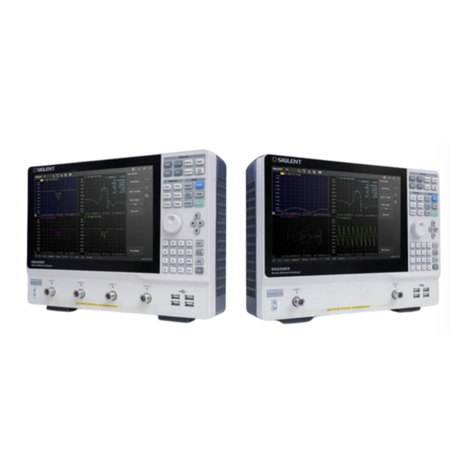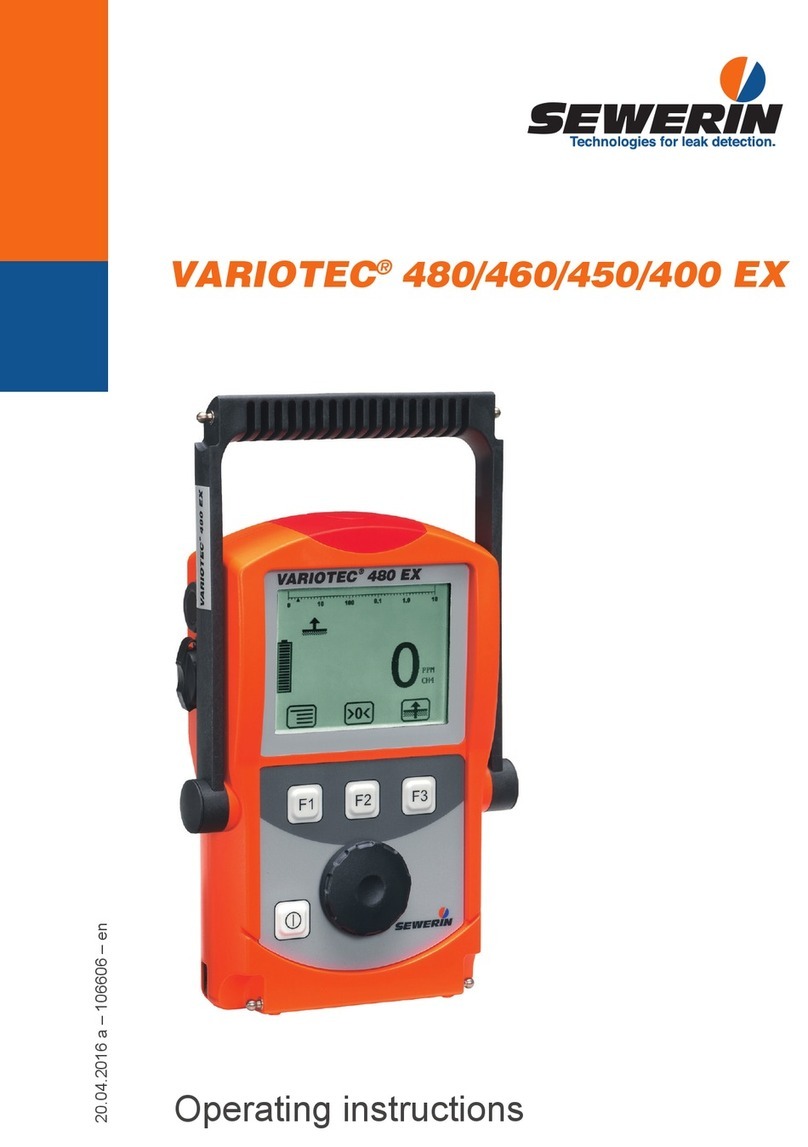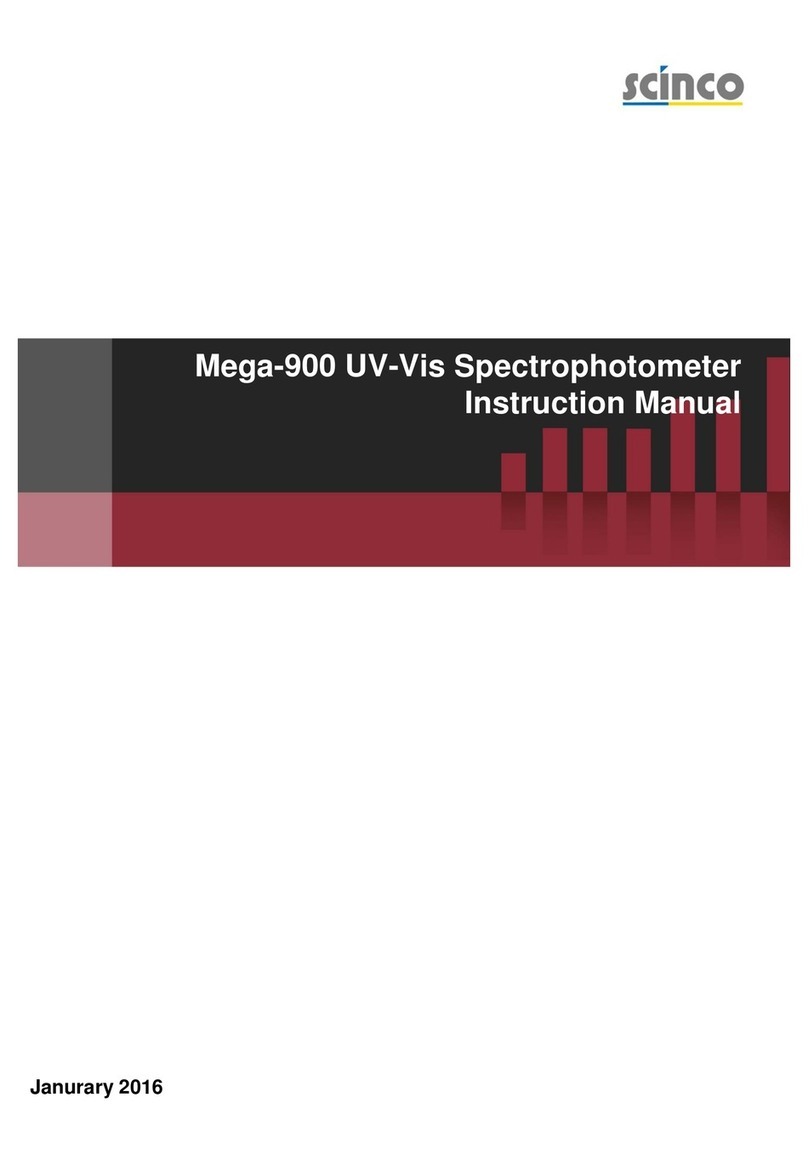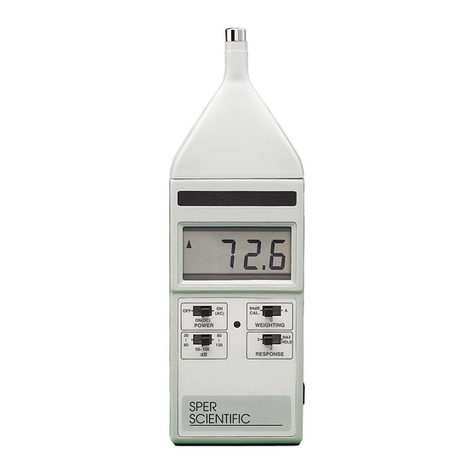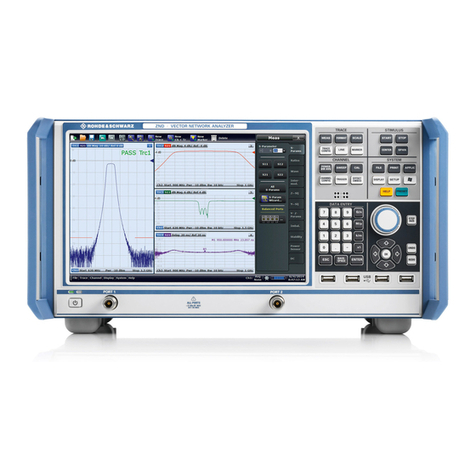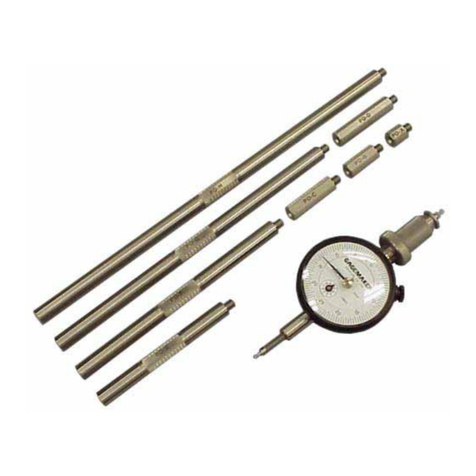PROTEA P2000 User manual

Issue 8 PROTEA page 1
P2000
Analyser Unit
Operating Manual
Manual Part
No.
Revision
status
Reason For
amendment
Scope of
amendment
Language
18-0004 08 Change to
Standard
New Version UK English

Protea P2000 Operating Manual Preamble
Issue 8 PROTEA page 2
Published by Protea ©
INFORMATION Copyright protection
All possible care has been taken in the
preparation of this publication, but Protea
and its agents and distributors, accept no
liability for any inaccuracies that may be
found.
Protea reserves the right to make changes
without notice both to this publication and
products which it describes.
The contents of this publication in the form
of text, figures, illustrations or photographs,
technical drawings, diagrams and
representations are protected by the
copyright of the manufacturer.
No part of this publication may be
reproduced, stored in a retrieval system or
transmitted in any form or by any means
electronic, mechanical, photocopying,
recording or otherwise without the express
prior written permission of the copyright
holder
Contact
Manufacturer Customer service and tools
Protea Ltd
2 Venture Park
Stirling Way
Peterborough
Cambridgeshire
PE3 8YD
United Kingdom
Tel:+ 44 (0)1733 215300
www.protea.ltd.uk
Protea Ltd
2 Venture Park
Stirling Way
Peterborough
Cambridgeshire
PE3 8YD
United Kingdom
Tel:+ 44 (0)1733 215300
www.protea.ltd.uk

Protea P2000 Operating Manual Preamble
Issue 8 PROTEA page 3
For Protea Distributor information see
www.protea.ltd.uk/global-network
Information regarding the installation and operational manual
The installation and operation manual, hereinafter referred to as the
manual, must always be stored close to the product and be in a
permanently legible condition. The manual must be handed over
along with the product if it is sold or passed on.
NOTE Follow the instructions given in the manual
This manual contains all the basic instructions
required for the safe operation of the product
and must therefore be read before any actions
are performed. Otherwise personal and
material hazards as well as functional and
operational malfunctions can occur.
Other applicable documents
This manual contains all the necessary steps for the installation and
operation of the P2000 analyser. This manual should be used in
conjunction with other manuals that describe the Control Unit. Two
types of analyser controller are available for the P2000. Information
for the use of these controllers can be found in the following
manuals.
NOTE Other applicable documents
18-0003 Manual for Control Unit P-PC
(the above Control Unit is used with 18-0006
Manual for P-PC (formerly ACWn) Software)
18-0008 Manual for Control Unit P-HMI

Protea P2000 Operating Manual Preamble
Issue 8 PROTEA page 4
Explanation of the symbols and pictograms utilised
The symbols and pictograms utilised below indicate safety-relevant
and important information which must be adhered to when
performing an operation and to ensure safe and optimum operation.
In the documentation
Symbol/Pictogram Description/Explanation
GENERAL HAZARD SYMBOL
(danger, warning, caution)
ELECTRIC SHOCK HAZARD
COMPRESSED GAS HAZARD
EXPLOSIVE, FLAMABLE
COMPRESSED GAS HAZARD
TOXIC SUBSTANCE HAZARD
(gas, solid or liquid)
LIFTING HAZARD
CONFINED SPACE HAZARD

Protea P2000 Operating Manual Preamble
Issue 8 PROTEA page 5
HOT SURFACE HAZARD
BIOHAZARD
ELECTRO STATIC
DISCHARGE (ESD)
SENSITIVE
HIGH INTENSITY
ULTRAVIOLET LIGHT
DO NOT OIL
READ AND OBSERVE
INSTRUCTIONS IN MANUAL
GENERAL INFORMATION
WEAR PERSONAL
PROTECTIVE EQUIPMENT
SUITABLE TO THE WORK
TASK

Protea P2000 Operating Manual Preamble
Issue 8 PROTEA page 6
Reasonably foreseeable inappropriate use
Reasonably foreseeable inappropriate use is deemed to have
occurred if the P2000 or any accessories are used in any other way
than that described in the “intended use”. Reasonably foreseeably
inappropriate use includes the use of the product in a manner not
intended by the manufacturer or distributor of the product but which
may result from foreseeable human behaviour.
Reasonably foreseeable inappropriate use includes –
Non application of existing or recommended safety devices
Modifications to the product and/or control unit and other
accessories
Inappropriate connection and use of compressed gas with
the product
Not installing and supplying an instrument air supply to the
standard set out in Appendix D
Interruption of instrument air supply for an excessive
duration
Inappropriate or incorrectly connected electrical cables
This list is not exhaustive as not all possible inappropriate use can
be foreseen in advance.
Legal warranty and liability for equipment defects
Protea “Terms and Conditions” can be found at
https://www.protea.ltd.uk/terms-and-conditions

Protea P2000 Operating Manual Preamble
Issue 8 PROTEA page 7
Skilled personnel
This manual addresses the specialist personnel listed below who
are involved with work on the P2000 or its accessories.
Skilled personnel Transport and storage
Transport and storage personnel are people who, due to their
training, professional experience and qualification, have all the
necessary skills to safely execute all actions in connection with
the transport and storage of the P2000, to instruct, to recognise
possible dangerous situations independently and to execute
measures to avoid danger.
Skills include experience with hoists, forklifts and lifting
equipment and knowledge of local laws and regulations,
standards and guidelines relating to transport and storage.
Skilled personnel Electrician
Electrician personnel are people who, due to their training,
professional experience and qualification, have all the
necessary skills to safely execute all actions and instruct all
actions related to the electrical installation of systems, to
independently foresee potential hazardous situations and
implement any measures to avert any danger.
Skills include the installation of industrial measurement and
control technology, knowledge of AC voltage and DC low
voltage power, electrical insulation and earthing, selection and
termination of cables and wires to regional standards.
Skilled personnel Compressed gas technology
Compressed gas technology personnel are people who, due to
their training, professional experience and qualification,
possess all necessary capabilities to safely execute actions,
and instruct all actions related to compressed gases and
pressurised systems, to independently foresee potential
hazardous situations and implement appropriate measures to
avert any danger.
The persons capabilities include, in particular, experience in
handling measurement and control technology as well as
knowledge of the regional applicable laws, standards and
regulations for compressed gas technology.

Protea P2000 Operating Manual Preamble
Issue 8 PROTEA page 8
Safety Notes and Warning Messages
General Instructions
Safety notes indicate the potential hazard and, if appropriate the
cause of the hazard, the probable consequence of ignoring the
safety note and how the hazard can be avoided.
Warning messages in the instructional text precede the step by step
procedure or may be placed just before a relevant step where the
procedure described poses a hazard to personnel or the
environment. Warning messages concisely indicate the potential
hazard, their cause and consequences and how to avoid the
hazard. Where the information about the consequences of the
hazards or the measures needed to avoid the hazards are readily
understood by the target audience then the warning message used
in this manual may omit this information.
Safety notes and warning messages must be strictly observed in
order to prevent accidents, personal injury or damage to property
or impair the operation of the device.
The Safety Notes used in this manual are set out as in the example
below
Signal Word Type and source of danger
Safety Symbol
which may be
followed by specific
hazard
Possible consequences should the
danger be ignored
Measure to prevent the danger
Signal words are set out in ISO3864-2
DANGER – There is imminent danger where non-compliance will
probably result in death or serious injury.
WARNING – There is imminent danger where non-compliance
could result in death or serious injury.
CAUTION – There is potential danger where non-compliance could
result in minor or moderate injury.
NOTICE, ATTENTION, or TAKE CARE - These signal words are
used to indicate potential risks of damage to the product or to other
property.

Protea P2000 Operating Manual Preamble
Issue 8 PROTEA page 9
Safety Notes used in this manual
DANGER
Electrical Shock from Live Electrical Equipment
Death or serious injury can result through contact
with live electrical equipment.
Do not attempt to install this system unless you are
qualified, competent and authorised to work on
electrical equipment operating at your local mains
electrical supply voltage.
Read the following section in this manual in its
entirety before commencing installation or
maintenance of the device.
If there is anything you do not understand or you do
not feel confident of your ability to follow the step by
step instructions, DO NOT PROCEED. Contact
Protea or your Protea authorised distributor for
assistance.
Always ensure that you have a valid permit to work
on the pipework or ducting to which the P2000
analyser unit is to be fitted.
Always ensure that you comply with local safety
regulations and procedures.
DANGER Compressed Gas
Death or serious injury can result through contact
with fast or suddenly escaping compressed gas or
bursting system parts such as pipework.
Gases used for verification of the P2000 may also
present a Toxic, Flammable or explosive risk.
Consult local safety regulations and site safety
procedures before handling compressed gas.
Specific gas may present a toxic, flammable or
explosive risk. Always consult local safety
regulations and site safety procedures before
handling toxic, flammable or explosive gases.
Gas cylinders should be secured to a surface or
mounted in a secured frame to protect the cylinder

Protea P2000 Operating Manual Preamble
Issue 8 PROTEA page 10
from damage or from impact that may result
should the cylinder fall over.
All work on the system must be carried out in the
depressurised state and with the system secured
against unintentional pressure build up.
Gas regulators connected to gas cylinders must
be turned off when performing installation,
maintenance or repair actions.
DO NOT make any structural changes or
modifications to the P2000 to accommodate a
pipe network.
Set-up a safety zone around the system during all
assembly, installation, maintenance and repair
work.
Before re-pressurising the system, check all the
pipe connections and tighten if necessary.
All piping should be assembled without
mechanical stress. Vibration of the pipe network
should be avoided using vibration dampeners.
Slowly re-pressurise the system.
Read the relevant section in this manual in its
entirety before commencing installation or
maintenance of the device and keep exactly to the
step by step instructions given in this manual.
If there is anything you do not understand or you
do not feel confident of your ability to follow the
step by step instructions, DO NOT PROCEED.
Contact Protea or your Protea authorised
distributor for assistance.
Always ensure that you have a valid permit to work
on the pipework or ducting to which the P2000
analyser unit is to be fitted.
Always ensure that you comply with local safety
regulations and procedures.

Protea P2000 Operating Manual Preamble
Issue 8 PROTEA page 11
DANGER Contact with Optical Lens material presents a
Toxic Hazard
Death or serious injury could result from touching
the Zinc Selenide lens material. Touching the lens
material may result in residue material being
digested.
Customer specific P2000 analysers may contain
long wavelength Zinc Selenide lenses. If your
P2000 has such optics, this will be stated in the
section of this manual entitled Order-Specific
Information.
DO NOT touch the optical component without
using appropriate personal protective equipment
(PPE).
Refer to the Zinc Selenide material safety data
sheet for safe handling and disposal information.
WARNING Single person lift could cause injury
Serious injury could result from lifting heavy load
Seek assistance when moving or lifting a heavy
load weighing more than 20 kg (44lbs).
Lift the load correctly
Bend your legs
Keep your back as straight as possible
Keep the load close to your body
Grip the box or load at opposite corners where
possible

Protea P2000 Operating Manual Preamble
Issue 8 PROTEA page 12
WARNING Inhalation of asbestos fibre presents a Biohazard
Serious injury could result from the inhalation of
asbestos fibres. Inhalation of asbestos can lead to
a condition called asbestosis that leads to an
increased susceptibility to cancer.
If in doubt as to the type of insulating material in
use then seek assistance or refer to plant
specifications and drawings.
Consider undertaking an asbestos survey if the
insulation material is not specified.
Strictly adhere to site health and safety regulations
in regards to the safe handling and disposal of
asbestos material.
Ensure that you read and understand your risk
assessments and method statements for working
with asbestos material so that you are aware of the
risks and know how the risk can be avoided.
Review your asbestos survey report.
Request asbestos aware training program if not
previously trained.
Check for asbestos warning symbols on or near
the site of the insulation material.
Always wear the correct PPE when handling
asbestos material.
WARNING Working in Confined Space could cause injury
Serious injury could result from working in a
confined space
Ensure area is well ventilated
Ensure area is well lit
Use Personal Protective Equipment such as
Knee pads if kneeling on floor
Keep Entrance and Exit to the Confined space
clear

Protea P2000 Operating Manual Preamble
Issue 8 PROTEA page 13
WARNING Touching Hot Surface could result in injury
Serious injury could result from touching a hot
surface
Consult your site safety regulations or seek
advice from supervisory personnel
Be aware of the hot surfaces in the working area
Use Personal Protective Equipment as directed
by your site safety regulations such as Heat
Resistant Gloves when handling hot objects
Do Not Handle Hot Objects for Long periods
WARNING Visual exposure or skin exposure to UV light
could result in injury
UV light is harmful to skin or eyes and may cause
cancer.
Avoid exposure to UV light when LED is
operational.
Precautions must be taken to avoid looking
directly at the UV light without the use of UV light
protective glasses.
Use Personal Protective Equipment such as UV
protective glasses as directed by your site safety
regulations.
DO NOT look directly at the front of the LED or at
the LED’s lens when the LED is operational.

Protea P2000 Operating Manual Preamble
Issue 8 PROTEA page 14
ATTENTION Damage to product may result if touched
Device or component is sensitive to Electro Static
Discharge (ESD)
Carefully follow the step by step instructions to
prevent damage to the component or product.
Care must be given to maintain the highest
standards of compliance to the maximum
electrical specifications when handling such
devices.
The device is particularly sensitive to any voltage
that exceeds the absolute maximum ratings of
the product.
Any applied voltage in excess of the maximum
specification will cause damage and possible
complete failure to the product.
You must use handling procedures that prevent
any electro static discharges or other voltage
surges when handling or using the device.

Issue 8 PROTEA page 15
Contents
1 Introduction 19
About this manual 19
About the P2000 series 21
P2000 - an overview 21
Documentation conventions 24
Analyser Identification 25
Further information 26
2 Installation 29
Introduction 32
Unpacking the system components 32
Pre-installation information 35
Location 36
Preparing the process gas duct – 37
Re-fitting insulation 40
Drilling the Control Unit Gland Plates 41
Preparing the Analyser Unit for Wiring 43
Wiring Tables 46
Analyser Covers 52
Integral Auto Verification Unit 55
3 Commissioning 62
Introduction 64
Mounting of CEM system components 64
Connection of Instrument Air Supply 67
Connection of communication 67
Connections to the AC Power Source 68
Insertion and wiring of In-Situ Heater 70
Insertion of the Analyser 70
Stack Process Conditions & Operational Readings 71
4 Operation 75
Introduction 75

Protea P2000 Operating Manual Contents
Issue 8 PROTEA page 16
5 Technical Specification 77
Introduction 77
P2000 Technical Specification 77
Auto Verification Unit specification 82
6 Inspection Schedules 84
Introduction 87
Nature and frequency of inspections 88
Quarterly (Three Monthly) Schedule 88
Annual Schedule 93
Obtaining further data in the case of a fault 94
Cleaning 95
Field gas calibration check 95
Fault-finding and Repair policy 99
Spares list 100
7 Disposal Instructions 103
Introduction 103
Disposal of Stored Data 103
8 Transport & Storage Instructions 106
9 Order-specific information 112
Appendix A - The P2000 with ATEX/IECEx approvals 114
Introduction 114
Quality assurance during production 114
Allowed environments 115
Maintenance additional requirements 116
Special Conditions for Safe Use 118
Appendix B - P2000 with MCERTS approval 124
Introduction 124
Quality assurance during production 125
Maintenance additional requirements 126
Appendix C - Protea analysers for US EPA compliance 127
Introduction 127

Protea P2000 Operating Manual Contents
Issue 8 PROTEA page 17
Services 127
Operation 128
Action on calibration error 131
Viewing the results 131
Electrical connections 132
Appendix D – Quality Standard for Instrument Air Supplied to Protea
Analysers 133
Introduction 133
Appendix E – Air Preparation Panel 136
Introduction 136
Appendix F – Power Supply Unit 138
Introduction 138
Appendix G - In-Situ Heater 140
Introduction 140
In-Situ Heater description 140
Technical Specification 141
Minimum Mains Cable Specification 141
Control Cable Specification 142
Fitting the In-Situ Heater 142
Appendix H - Hot Access Port 147
Introduction 147
Operation 147
Drawings 149
Appendix I – By Pass 152
Introduction 152
By-Pass description 152
Fitting the Optional By-Pass 154
Connecting the Heater 158
Appendix J - In-Situ Steam Heater 162
Introduction 162
In-Situ Steam Heater description 162

Protea P2000 Operating Manual Contents
Issue 8 PROTEA page 18
Fitting the In-Situ Steam Heater 163
Appendix K – Steam Heated By Pass 165
Introduction 165
By-Pass description 165
Fitting the Optional Steam Heated By-Pass 166
Appendix L – P2000D (UV Diode) 170
Introduction 171
Maintenance of the P2000D 173
Replacing the UV source 175
In-service history 180

Protea P2000 Operating Manual 1. Introduction
Issue 8 PROTEA page 19
1 Introduction
About this manual
This manual provides information for use of the P2000 series of
analyser units. Information for use is provided so that the product
can be used safely, effectively, and efficiently. This information has
been prepared in accordance with BS EN 82079-1:2020
Preparation of information for use (instructions for use) of products.
The manual has been divided into the following sections
Introduction This section presents an overview of the
manual and the CEMS system with sources of
further information and product support.
Installation This section provides information on unpacking
the system and the installation of the system.
Commissioning
This section describes the order that should be
followed to connect services (air, power, and
communication) to the P2000 and the
appropriate Control Unit. The insertion of the
P2000 into the stack is also described.
Operation You should refer to additional documentation
for the operation of the P2000 via the
appropriate Control Unit. The P2000 as stand-
alone product has no accessible controls or
indicators.
Technical
Specification
This section provides the specification for the
P2000 and the integral Auto Verification Unit.
Inspection
Schedules
This section provides information on quarterly
and annual inspection schedules. Instructions
are also provided for performing a field
calibration check. A list of available spare parts
is also provided.
Disposal
Instructions
This section describes how the P2000 and its
associated components should be safely
disposed of without damage to the
environment.
Transport and
Storage
This section provides information that should
be used to protect the P2000 and the safety of
persons during transportation and storage.
Order-specific
information
Gives additional information specific to the
instrument you have purchased.

Protea P2000 Operating Manual 1. Introduction
Issue 8 PROTEA page 20
Appendix A Gives details of the ATEX and IECEx
approvals, which may be applicable.
Appendix B Describes the P2000 with MCERTS approval
Appendix C Describes issues surrounding US EPA
compliance
Appendix D Provides details of the Protea quality standard
for Instrument air
Appendix E Describes the Air Preparation Panel that Protea
recommends for use with the P2000
Appendix F Describes the local power supply unit that can
be used to supply 24V to the P2000
Appendix G Describes the In-situ Heater and how the in-situ
heater should be installed
Appendix H Describes the Hot Access Port used for
moisture calibration
Appendix I Describes the By-Pass for high temperature
applications or applications where the stack or
duct prevents the analyser from being fully
inserted into the process.
Appendix J Describes the In-Situ Steam heater for flue gas
temperatures below 120º (248ºF)
Appendix K Describes the Steam Heated By-Pass for use
in Hazardous area applications where stack or
duct prevents the analyser from being fully
inserted into the process.
Appendix L Describes the P2000D option where a UV
source is used to measure low range gas
concentrations in addition to an IR source.
In-service
history
Provides a template list for recording service
inspections and repairs
Table of contents
